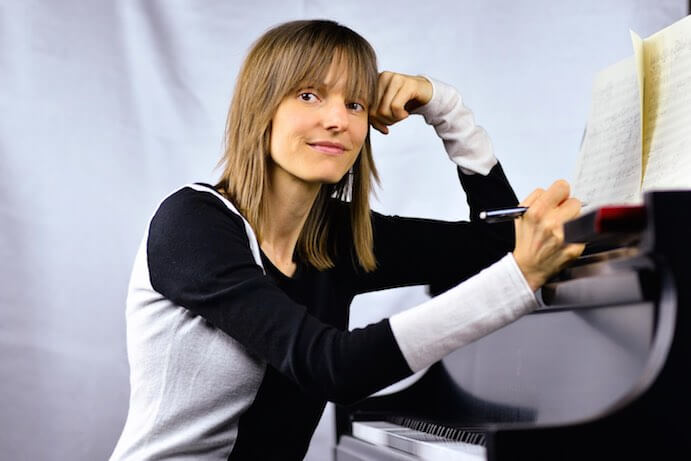The Society of Composers, Inc. (SCI) has been promoting its members and their music since 1965. SCI teamed up with Capstone Records over 20 years ago to bring the work of SCI members to life, and the compilations they have produced help feature and promote both established and new-to-the-scene composers writing in a variety of styles. Flux, Volume 33 (Navona) does not break from this tradition, with each piece offering something different for the listener.
The busy and hectic On a better filtering algorithm by Ryan Carter starts the album off. Carter captures the struggle society has with social media with a frenetic yet controlled chaos bouncing between confusion and calm, almost on a dime. By the end of the track, there is a beauty to the battuto strings and distant glockenspiel that bring the listener down from the mounted tension that builds throughout most of the piece. Performed by Present Music, a string quartet plus percussion, the ensemble owns the technical and timing challenges that make up the majority of the piece.
Wendy Wan-Ki Lee’s The Earthy and Ethereal Bond explores the balance between realism and idealism. This duet between flute and cello makes great use of the range and dexterity of each instrument, and a playful tit-for-tat permeates the piece. The ending especially is gripping with the cello playing in its upper register on a unison pitch with the flute, creating a beautiful sonic color.

Wendy Wan-Ki Lee
Unicorn Dance by Chi-hin Leung brings together three traditional instruments from Japan, Korea, and China and reimagines their sounds in a new way. The timbres of the nohkan, piri, and bass sheng are unique to each other, giving room to be distinctly heard. At the same time, these instruments come together to form colorful and peaceful sounds. The performers from the Asian Young Musicians’ Connection on this piece bring a level of mastery to the music that is evident from the start.
Similar in beauty yet also haunting is Igor Karača’s Echo Caves for soprano saxophone and piano. Karača’s music mimics the experience of being in caves in South Africa with intimate writing and effects. The saxophone part takes center stage, building to a climax with extreme demands that are expertly pulled off by Jeffrey Loeffert.
The middle of the album takes another stylistic turn with Ingrid Stölzel’s poetic The Voice of the Rain. This gorgeous trio for flute, cello, and mallet percussion was inspired by Whitman’s poem of the same title and has a great overall musical arc. As a complementary follow up track, Jonah Elrod’s Urban Sky Glow transports the listener into another sonic world. Written for marimba and electronics, Elrod balances both elements effectively, pushing them to and fro, and Brian Baldauff gives a much needed sensitivity and touch to the marimba part.

Ingrid Stölzel–Photo by Cristian Fatu
Crumbs by Leah Reid explores the swirling and shaking side of the percussion world, with almost all of the instruments comprising different types of shakers, maracas, or similar homemade instruments that utilize dried beans, bowls, wine glasses, and other assorted sounds. The effects and imagery are fun to pick out as a listener and impressive to hear performed. With so much going on, it is hard to believe that I-Jen Fang is the only percussionist on the recording.
A sonic depiction of vast mountain ranges, And the Earth Sang to Me Through the Wind by Matthew Heap is a flurry of tremelos, scale runs, and interwoven lines. Performed by Khasma Piano Duo, the piece is a test of stamina and dexterity, which the performers execute wonderfully. Large chunks of chords capture the grandeur of the open skyline while the constant rush of notes whip like wind gusts at the summit. Heap paints peaks into the form of the piece as well, fading in and out with multiple rises and falls before letting everything fade away into the distance. Nathaniel Haering closes out the album with Medical Text p.57, a work for voice and electronics. Haering builds a sonic world that explores the many sounds the human voice is able to produce, including normal speaking, vocal fry, throat singing, falsetto scoops, guttural noises, and many others. There are times that seem to be felt more than heard and are further reinforced by the electronic backing.
As is typical of a Society of Composers, Inc. compilation, each track on Flux, Volume 33 is unique, extremely well written, and brings something new into the musical landscape. Even the curation and flow of the album makes great musical sense. This album should appeal to all music lovers, even if they aren’t typical new music concert goers. Flux is a “must listen” for 2020.




















